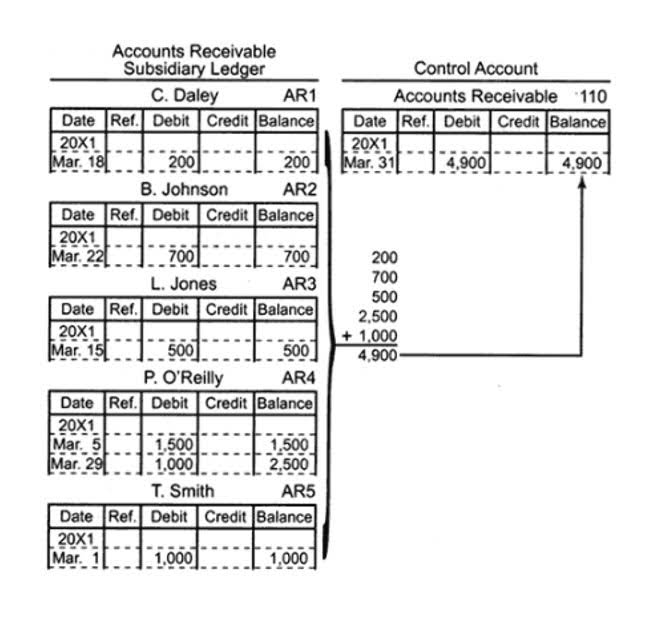Mastering the Legal General Ledger: A Law Firms Financial Lifeline

Assets represent what a company owns, liabilities represent what a company owes, and stockholders’ equity represents the residual interest in the company’s assets after deducting its liabilities. It’s also law firm chart of accounts important to keep accurate records and track funds in general retainers. Unearned fees (like general retainers) should be kept in a separate account so that they are not used in error. Oracle General Ledger and Oracle Subledger Accounting provides a variety of reports to support your reporting requirements for trial balances, detail journals and account analysis. With Clio Accounting you can generate all sorts of financial reports to help you make data-driven decisions for the growth of your firm.

Law Firm Chart of Accounts Explained: Tips & Samples
- Following completion, these reports are submitted to a law firm’s jurisdiction on their specified cadence.
- When setting up your chart of accounts, be sure to pay special attention to your handling of trust liability accounts to ensure you are keeping accurate records and following the rules.
- This means taking steps to ensure data security (using legal accounting software that maintains robust security standards can help with this).
- When it comes to law firm finances, knowledge is more than just power—it’s key for succeeding long term and staying compliant with ethics rules.
- This can be legal accounting solutions, or it can be integrations between legal practice management solutions and best-in-class accounting tools.
Specific to law firms, a workable chart of accounts helps you keep trust funds and operating funds separate. It also allows for the organization and documentation of advanced client costs so that the firm can bill for them. Regularly reviewing your general ledger for law firms ensures that all entries are accurate and that your financial statements reflect the true financial position of the firm. This practice is essential for both short-term management and long-term strategic planning, contributing significantly to the financial analysis of the law firm. Accurately tracking income and expenses is vital for maintaining virtual accountant a law firm’s profitability. Income accounts may include legal fees and consultation charges, while expense accounts could cover office supplies, rent, and salaries.
Data Migration
For fixed assets, a horizontal format shows the original cost minus depreciation expense overtime to give the net book value. Current and long-term liabilities are also distinguished and subtracted accordingly. Let’s bring the general ledger to life with some real-world examples from a law firm. Remember, every transaction involves at least two accounts- one debit and one credit, ensuring that the accounting always balances. A general ledger is not just about recording transactions; it’s also a tool for detecting errors.
Best Legal Accounting Software for Lawyers
While we QuickBooks always advise referring to your specific state’s rules, the ABA’s Model Rules of Professional Conduct can offer direction for law firm accounting. While these two terms are often used interchangeably, accounting and bookkeeping for lawyers are technically different things. Essentially, legal bookkeeping involves recording and balancing financial transactions at your firm, while accounting involves analyzing, interpreting, and summarizing that financial data. To set up an accounting system that supports compliant financial management, you need specialized tools and applications. You can modify the chart of accounts in a generic accounting platform like Quickbooks Online.
Regular Review and Updates
List of AccountsThe list of accounts is a hierarchical outline of the firm’s financial accounts, grouped at the top level by assets, liabilities, equity accounts, revenue, and expenses. Your firm’s chart of accounts will have several sub-accounts under each of the top-level groups, often with their own sub-accounts. The most basic component of the chart of accounts is the chart itself, which is a categorized list of your accounts.

While this primarily applies to new law firms, ensuring that the basics are determined and set up correctly is critical. When looking at the importance of solid accounting, you’re really talking about looking at financial data on a regular basis. And you can’t do that if you’re not gathering and sorting it on a regular basis.
A common mistake that arises with generic payment solutions is charging credit card fees to trust accounts. This won’t happen when you accept payments through LawPay — the system only applies fees and chargebacks to your firm’s operating account. That’s just one feature of several that help you avoid inadvertent ethics violations. Balance Sheet and Income StatementThe transaction records roll up to create your firm’s financial statements. The balance sheet shows your firm’s asset, liability, and equity balances as of a given day.
- Unearned fees (like general retainers) should be kept in a separate account so that they are not used in error.
- How to set up a general ledger for a law firm can seem daunting, but with a systematic approach, it becomes manageable.
- The general ledger plays an indispensable role in financial accounting and should not be overlooked by attorneys.
- Law firms have many accounting details that must be addressed, and accountants must make sure everything they are processing and providing to your firm, the IRS, and other required entities is following GAAP correctly.
- Finances are one of the most critical areas of your law firm, and you should be involved with them.
- Maintaining complete revenue documentation through a centralized general ledger allows your practice to demonstrate the accuracy and reliability of your finances, which is essential for external reporting.
Effective financial management for law firms
It is the central repository for a firm’s financial transactions, providing a detailed record of all income, expenses, assets, liabilities, and equity. Each transaction is tied to a sub-ledger account, giving you a clear picture of your firm’s performance and helping you make data-driven decisions. For law firms, accuracy and compliance are non-negotiable when recording financial transactions.

If you have a line of credit that hasn’t been drawn upon, it should be counted as an asset (you could consider it cash on hand). Once withdrawn, the line of credit would no longer be counted as an asset—it would become a liability (as it is then money owed). You can go with an accrual or cash accounting method in the US, and the difference is mostly about timing. According to Clio’s Legal Trends Report, firms had a realization rate of 81%.

